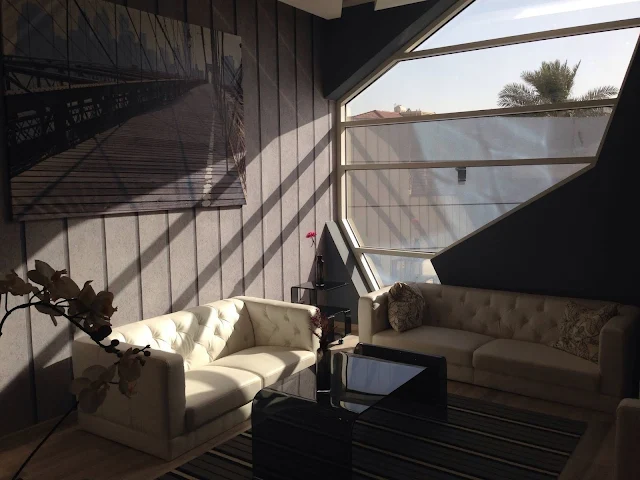Living in a small space doesn't mean sacrificing style or functionality. In fact, it's an opportunity to showcase creativity and clever design solutions to make every inch count. With thoughtful planning and strategic choices, you can transform a compact area into a chic, multifunctional haven. Here's a comprehensive guide on how to create a functional and stylish small space:
1. Embrace Minimalism: Start by decluttering and adopting a minimalist approach. Clear out unnecessary items and embrace the philosophy of 'less is more.' Streamlining possessions creates a sense of openness and allows the space to breathe.
2. Plan and Prioritize: Before diving into design, assess your needs and prioritize functionality. Determine the essential functions of the space - whether it's a living room, bedroom, or studio apartment - and plan accordingly to maximize usability.
3. Optimize Storage Solutions: Utilize every nook and cranny for storage. Invest in multi-functional furniture like ottomans with hidden storage, wall-mounted shelves, or bed frames with built-in drawers. Vertical storage solutions help save floor space.
4. Choose Furniture Wisely: Select furniture that serves multiple purposes. Foldable or extendable tables, sleeper sofas, and nesting tables are excellent choices for small spaces. Consider furniture with exposed legs to create a sense of openness.
5. Use Light Colors and Mirrors: Lighter hues like whites, creams, and pastels can make a space feel larger and brighter. Incorporate mirrors strategically to reflect light and create an illusion of depth, making the room appear more spacious.
6. Create Visual Flow: Maintain visual continuity by using a cohesive color palette and consistent flooring throughout the space. Uninterrupted lines and a sense of flow can make a small area feel more expansive.
7. Smart Room Dividers: Employ room dividers or furniture arrangements to define separate zones within an open floor plan. Bookshelves, folding screens, or curtains can partition spaces without compromising the overall openness.
8. Maximize Natural Light: Allow as much natural light as possible into the space. Sheer curtains or light-filtering blinds can maximize daylight while maintaining privacy. Natural light not only makes a space feel airy but also accentuates its charm.
9. Incorporate Multi-Functional Elements: Look for pieces that serve multiple functions. For instance, a desk that doubles as a vanity or a murphy bed that converts into a seating area during the day. Versatile items optimize space utilization.
10. Personalize with Smart Accessories: Limit decorative elements but make them count. Opt for statement pieces or unique accessories that add personality without overcrowding the space. Consider functional decor, like wall-mounted organizers or decorative baskets.
11. Think Vertically: Make use of vertical space by installing shelves or storage units that reach the ceiling. This not only maximizes storage but draws the eye upward, creating an illusion of height.
12. Flexibility and Adaptability: Lastly, remain open to rearranging and adapting your space as needed. Small spaces thrive on versatility, so be willing to tweak layouts and functionalities to suit changing needs.
Crafting a functional and stylish small space requires ingenuity and thoughtful design choices. By focusing on minimalism, smart storage solutions, versatile furniture, and strategic design elements, you can transform even the tiniest of spaces into a cozy, organized, and visually appealing oasis that perfectly reflects your style and meets your everyday needs.

Comments
Post a Comment